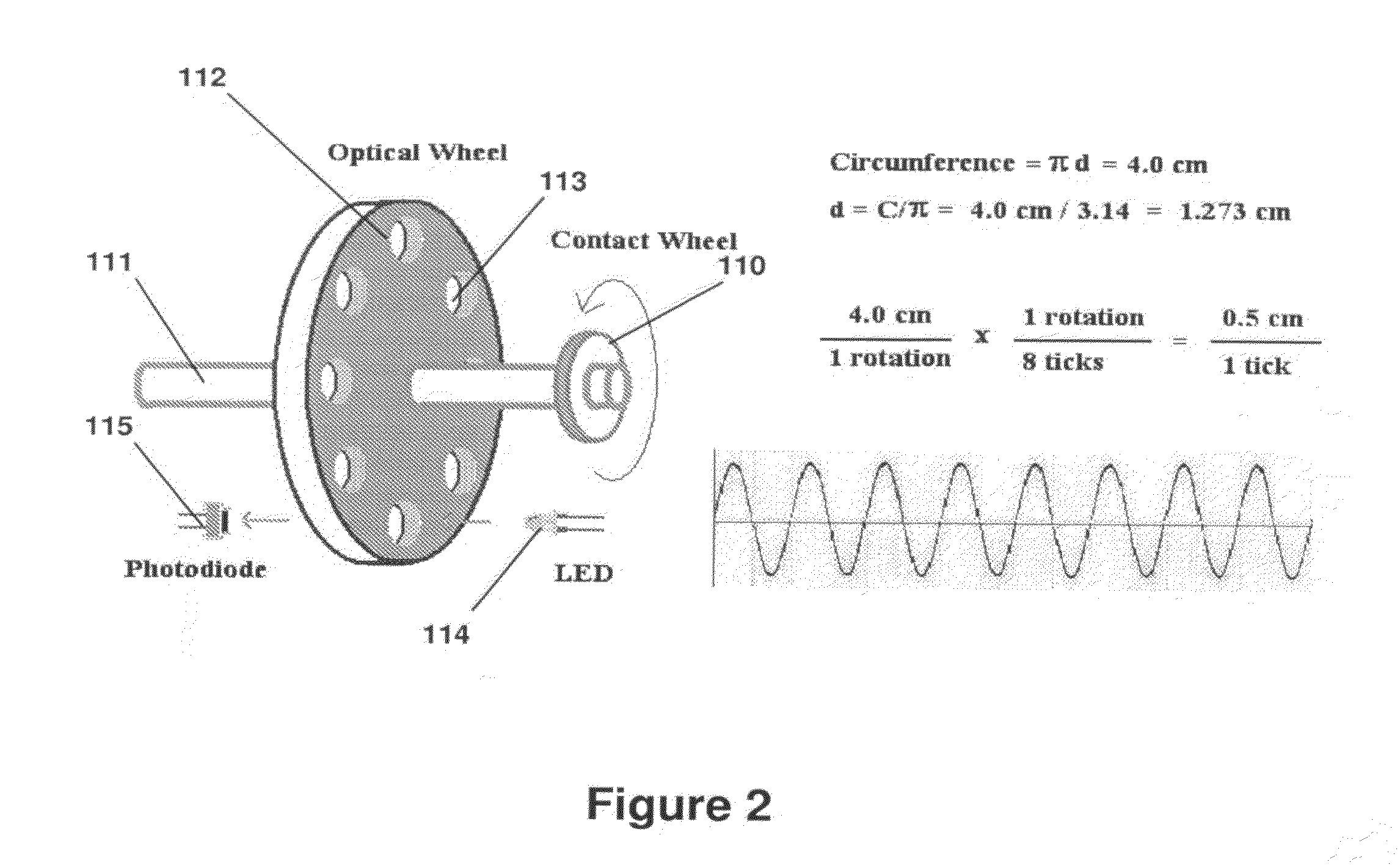Digital distance measurer for nerve conduction studies
- Summary
- Abstract
- Description
- Claims
- Application Information
AI Technical Summary
Benefits of technology
Problems solved by technology
Method used
Image
Examples
Embodiment Construction
)
[0025]Turning to the drawings for a better understanding, FIG. 1 provides an illustration of a contemporary nerve conduction study, this one being performed on an arm nerve. A reference electrode 5 is placed at an initial position, here on the hand near the wrist of the subject. Next, a second electrode 6 (labeled as a stimulator in the Figure) is placed a certain distance from the original position, then a current is passed from the first electrode 5 to the second 6 and the time lapse is measured. Once the time lapse is measured a velocity can be determined by using the distance (A) between the initial position and the second position. It is clear that obtaining an accurate velocity value depends on the accuracy of the distance measured. This process may be repeated for the distance A several times to ensure accuracy. Next, the second electrode is moved a second distance (here denoted by B) and the excitation process is performed again. Like the first set, this second measurement ...
PUM
 Login to View More
Login to View More Abstract
Description
Claims
Application Information
 Login to View More
Login to View More - R&D
- Intellectual Property
- Life Sciences
- Materials
- Tech Scout
- Unparalleled Data Quality
- Higher Quality Content
- 60% Fewer Hallucinations
Browse by: Latest US Patents, China's latest patents, Technical Efficacy Thesaurus, Application Domain, Technology Topic, Popular Technical Reports.
© 2025 PatSnap. All rights reserved.Legal|Privacy policy|Modern Slavery Act Transparency Statement|Sitemap|About US| Contact US: help@patsnap.com



